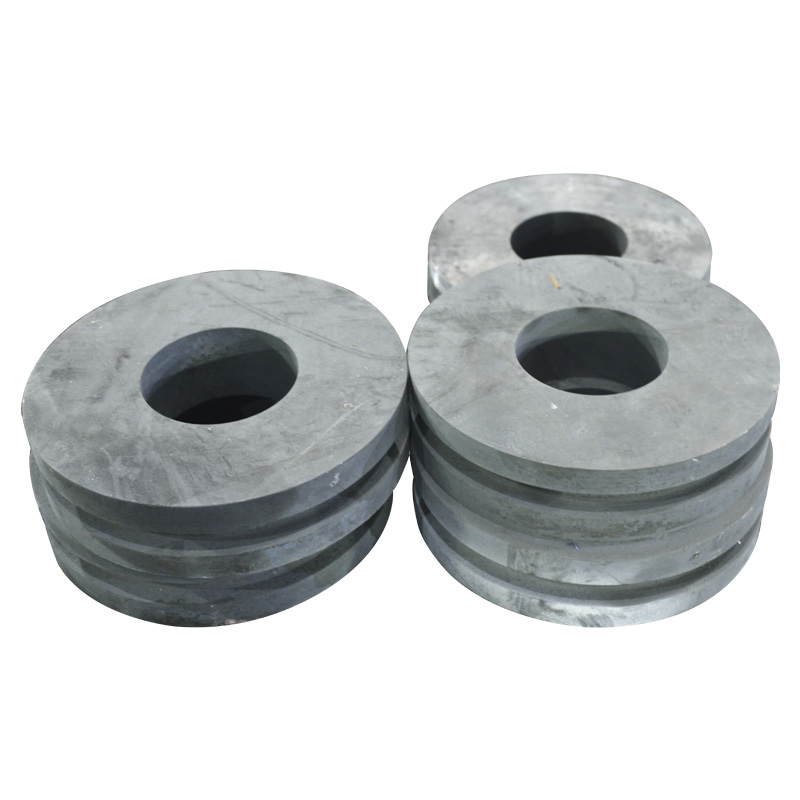What are the specifications for forging?
2022-06-07
The key of forging cooling standard is the cooling rate. The appropriate cooling rate should be determined according to the chemical composition of the forging material, the characteristics of the structure, the size of the section of the forging and the deformation of the forging. In general, low alloying degree, small section size, simple shape forgings, cooling speed is allowed to be fast, forging can be cooled in air; Otherwise, it must be cooled slowly (ash cooling or furnace cooling) or phased cooling.
For steel with high carbon content, in order to avoid the precipitation of network carbide at the grain boundary in the initial cooling stage after forging, it should be cooled to 700℃ by air cooling or air blast, and then slowly cooled by spraying the forgings into ash, sand or furnace.
For the steel without phase transformation, it should be cooled rapidly in the temperature range of 800-550℃ to avoid the precipitation of reticulated carbides. For steels prone to martensitic transformation during air cooling, slow cooling is necessary after forging in order to avoid cracks. For steel sensitive to white spots, in order to prevent white spots in the cooling process, furnace cooling should be carried out according to certain cooling specifications.
For superalloys, due to their slow recrystallization rate, recrystallization can be completed at the same time with deformation only at higher temperature and appropriate deformation degree. Therefore, residual heat after forging is often used to slowly cool them. For some small and medium-sized forgings, often use stacked air cooling method, nickel base superalloy, recrystallization temperature is higher, recrystallization speed is slower, in order to get a complete recrystallization structure of forgings, forging can be timely put into the furnace higher than the alloy recrystallization temperature for 5-7min, and then take out air cooling. In the forging process, such as failure due to the suspension of intermediate cooling, also according to the time final cooling specification.
The main tools for measuring the geometric shape and size of forgings are steel ruler, caliper, vernier caliper, depth ruler, square, etc. Forgings with special shapes or more complex can be tested with samples or special instruments. General forgings inspection has the following contents.
Inspection of length, width, height and diameter of forgings. Mainly with calipers, calipers. Inspection of inner hole of forgings. Caliper without slope, caliper, plug gauge with slope. Inspection of special surface of forging. For example, the size of blade profile can be checked by profile sample, inductance meter and optical projector.
For steel with high carbon content, in order to avoid the precipitation of network carbide at the grain boundary in the initial cooling stage after forging, it should be cooled to 700℃ by air cooling or air blast, and then slowly cooled by spraying the forgings into ash, sand or furnace.
For the steel without phase transformation, it should be cooled rapidly in the temperature range of 800-550℃ to avoid the precipitation of reticulated carbides. For steels prone to martensitic transformation during air cooling, slow cooling is necessary after forging in order to avoid cracks. For steel sensitive to white spots, in order to prevent white spots in the cooling process, furnace cooling should be carried out according to certain cooling specifications.
For superalloys, due to their slow recrystallization rate, recrystallization can be completed at the same time with deformation only at higher temperature and appropriate deformation degree. Therefore, residual heat after forging is often used to slowly cool them. For some small and medium-sized forgings, often use stacked air cooling method, nickel base superalloy, recrystallization temperature is higher, recrystallization speed is slower, in order to get a complete recrystallization structure of forgings, forging can be timely put into the furnace higher than the alloy recrystallization temperature for 5-7min, and then take out air cooling. In the forging process, such as failure due to the suspension of intermediate cooling, also according to the time final cooling specification.
The main tools for measuring the geometric shape and size of forgings are steel ruler, caliper, vernier caliper, depth ruler, square, etc. Forgings with special shapes or more complex can be tested with samples or special instruments. General forgings inspection has the following contents.
Inspection of length, width, height and diameter of forgings. Mainly with calipers, calipers. Inspection of inner hole of forgings. Caliper without slope, caliper, plug gauge with slope. Inspection of special surface of forging. For example, the size of blade profile can be checked by profile sample, inductance meter and optical projector.
Forgings bending inspection. The forgings are usually rolled on a platform or rotated by supporting the forgings with two fulcrums, and the value of their bending is measured by a dial meter or a marking disk. Forgings warpage check is to check whether the two planes of the forgings are on the same plane or keep parallel. Usually the forgings on the platform, hold a part of the forgings by hand, when the other plane part of the forgings and the platform plane gap, with a feeler gauge to measure the size of the gap caused by warping, or dial indicator on the forgings to check the pendulum of warping.

X
We use cookies to offer you a better browsing experience, analyze site traffic and personalize content. By using this site, you agree to our use of cookies.
Privacy Policy



